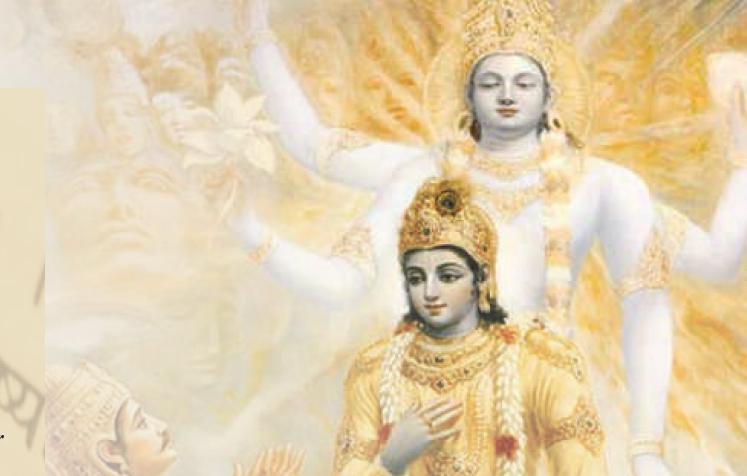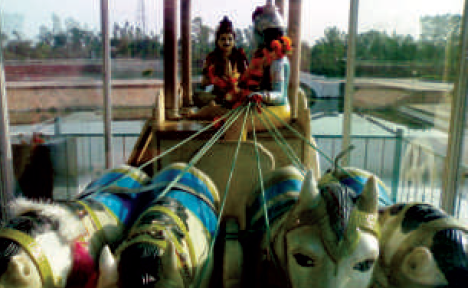Kurukshetra
This is a collection of articles archived for the excellence of their content. Readers will be able to edit existing articles and post new articles directly |
Kurukshetra
Wars And Peace....
India Harmony Volume - 1 : Issue – 5 July-August, 2012
Kurukshetra, the holy town in the state of Haryana is also known as Dharmakshetra which means the field of righteousness, a name well suited for its legendary past and religious predominance.The legendary tales of this place starts with Kuru, who laid the foundations of this royal dynasty. Ironically this land witnessed a great battle between the successors of Kuru, in which Lord Krishna played an important role. As a cradle of Indian civilization, this place found its rendering in many of the ancient texts and most of the books of that time contain either the description of Kurukshetra or names of personalities from there. A large number of Vedic transcripts were composed from here and Kurukshetra was the seat of all the social, spiritual and political traditions of the old era. Archaeological expeditions have proved that this city was in existence during the pre-Harapan times. Situated on a great marshy plain, Kurukshetra, in the vicinity of the foothills, was the gateway to the great Indian north. As the Aryans descended from the mighty Himalayas, their first halt was Kashmir where the followers of Kaushal Rishi settled. Other Rishis and their followers continued their forward march and settled along the banks of the Saraswati river as it flowed into the plains.
Be it the Mahabharata war in Kurukshetra in ancient times that has held an immense lesson for humanity, or, the wars of Panipat during the medieval times, they have been historic watersheds, paving the way for new empires and altering the entire socio-political discourse in India.
There are a number of sections of the Mahabharata that are relatively complete in and of themselves, and are often considered individual works that make up a larger whole.
How Some Legends Of History Have Described The Gita
Arthur Schopenhauer, the great German philosopher says, "I...encounter [in the Vedas] deep, original, lofty thoughts... suffused with a high and holy seriousness."
The early American writer Ralph Waldo Emerson, read the Vedas daily and wrote: "I owed a magnificent day to the Bhagavad-Gita" Henry David Thoreau said: "In the morning I bathe my intellect in the stupendous philosophy of theBhagavad Gita... in comparison with which... our modern world and its literature seems puny and trivial." So great were Emerson and Thoreau's appreciation of Vedantic literatures that they became known as the American transcendentalists. Their writings contain many thoughts from Vedic Philosophy.
Other famous personalities who spoke of the greatness of the Vedas were: Alfred North Whitehead (British mathematician, logician and philosopher), who stated that: "Vedanta is the most impressive metaphysics the human mind has conceived."
Francois Voltaire stated: "... everything has come down to us from the banks of the Ganges." From these statements we see that many renowned intellectuals believed that the Vedas provided the origin of scientific thought.
Most famous of these is the Bhagavad Gita
section in which Lord Vishnu's avatar Krishna
gives advice to the prince Arjuna during the battle
at Kurukshetra, when Arjuna sees himself up
against his own family members.
The Mahabharata as an epic and a historical occurrence covers a great deal of material, ranging from simple histories to entire philosophies on living. The Mahabharata begins with a claim of completeness, stating: “What is found here may be found elsewhere. What is not found here will not be found elsewhere.”
Jyotisar (in modern day Haryana), or the source of light and inspiration, is the birth place of the holy scripture Bhagwad Gita. The site lies some 12 km from Kurukshetra on the Pehowa road. Jyotisar delights with its fine waterbody, bathing ghats and small temples. Here the marble image of Lord Sri Krishna and Arjun stand immortalised in marble: Lord Krishna explaining to Arjun, the doctrine of Karma through the Gita Updesh. A banyan (believed to be an off-shoot of the original tree under which the Lord gave His Sermon) gives shade to the area.
The legend of the Ban Ganga goes back to the final days of the Mahabharata battle when the patriarch, Bhishma, lay mortally wounded on a bed of arrows. In his dying moments, he felt thirsty and, as the patriarch of both the Kauravas and Pandavas, he sent for Arjun. It is said that Arjuna's arrow brought the waters of the holy Ganga to quench the thirst of Bhishma. Today the site is worshipped as Bhishma Kund and lies some 12 km from Kurukshetra.




